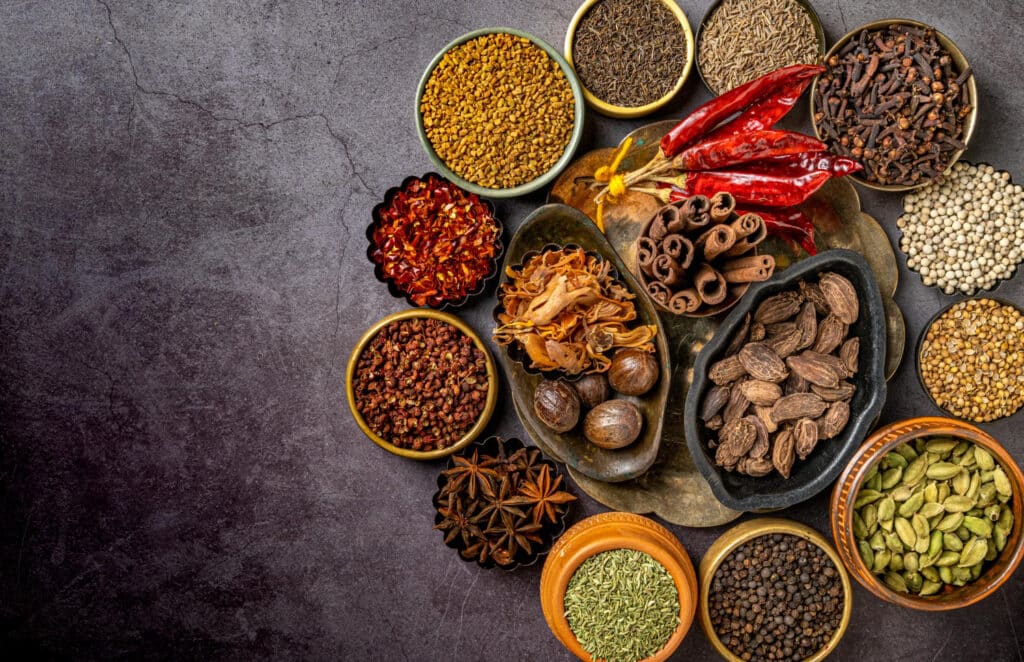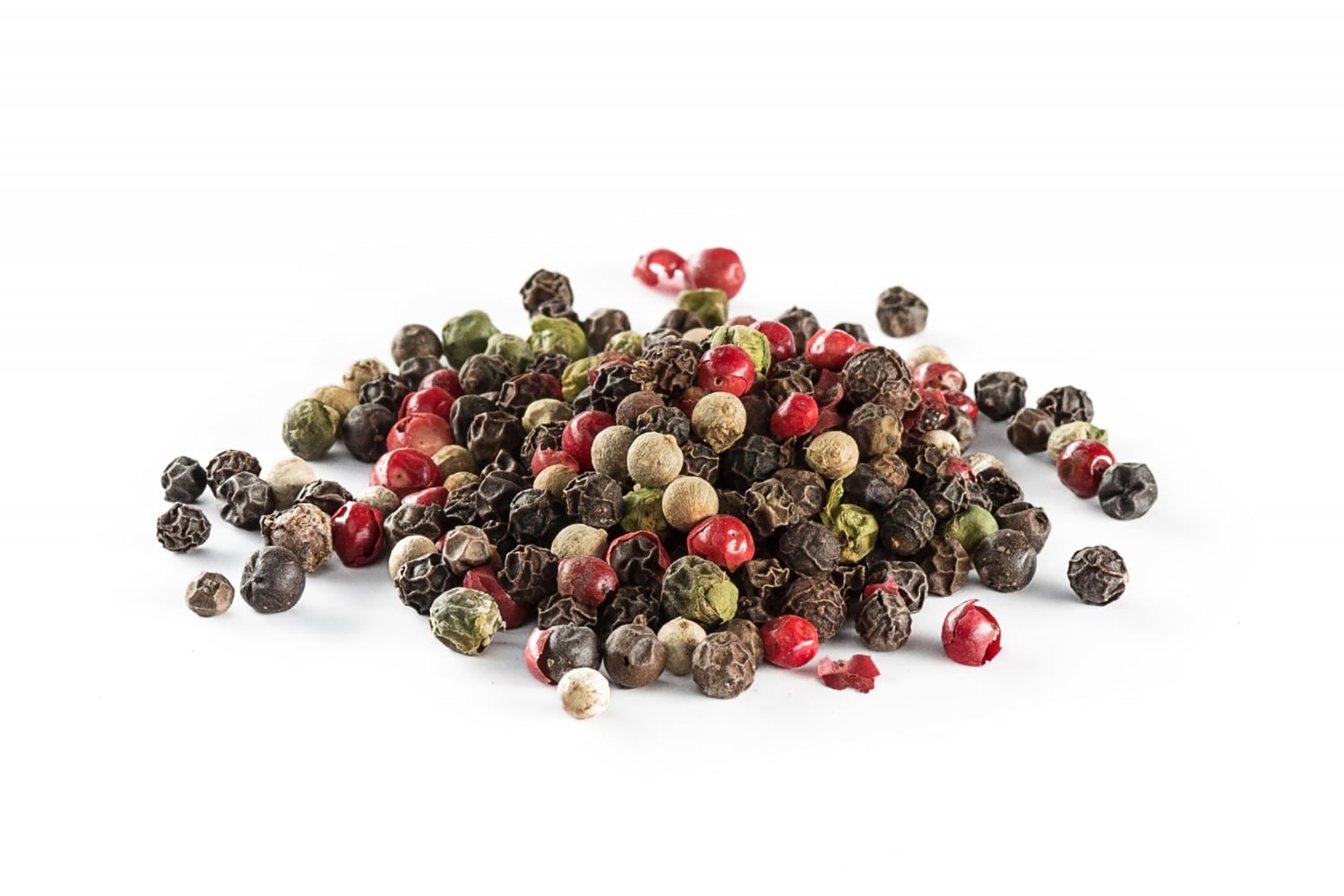Asian cuisine is an enchanting tapestry of flavors, aromas, and diverse cultural influences that have developed over centuries. It boasts an unparalleled range of spices that are the heart and soul of these delicious dishes. In this comprehensive exploration, we will delve deep into the captivating world of Asian spices, taking a closer look at their origins, unique characteristics, and their crucial role in the vibrant tapestry of Asian culinary traditions.
Turmeric, scientifically known as Curcuma longa, is a member of the ginger family. Its roots are the primary part used in culinary and medicinal applications. Originating in South Asia, particularly in India, where it has been cultivated for over 5,000 years, turmeric has a rich history intertwined with both Ayurvedic and traditional Chinese medicine. Turmeric, known as the “Golden Spice,” originates from the Indian subcontinent and holds a special place in the world of Asian cuisine. This vibrant yellow spice is celebrated not only for its vivid color but also for its potent medicinal properties. Curcumin, a key compound found in turmeric, is highly regarded for its anti-inflammatory and antioxidant attributes. Its warm, earthy flavor is a fundamental component in numerous Asian dishes and is a cornerstone of curry powder, which imparts its golden hue to countless Asian curries. Turmeric’s medicinal properties have earned it a special place in traditional medicine systems. Curcumin, the key active compound, is renowned for its potent anti-inflammatory and antioxidant properties. It has been used for centuries to alleviate various ailments and is believed to promote overall well-being.
Pepper: The Spicy Gem
Pepper, often referred to as the “King of Spices,” is a globally cherished spice with a rich history, known for its ability to add a kick of heat and depth to a variety of culinary delights. In this section, we will delve deep into the world of pepper, uncovering its origins, unique characteristics, and the pivotal role it plays in Asian cooking. Pepper, derived from the dried berries of the Piper nigrum plant, has a storied history dating back to ancient times. Its origins can be traced to the Western Ghats of India, where it was cultivated and traded extensively. Pepper was so highly regarded that it was referred to as “black gold” and played a crucial role in the spice trade routes that connected Asia with Europe. Pepper, the “Spicy Gem,” is a testament to the rich history and diversity of Asian spices. Its origins in India, coupled with the variety of peppercorns it offers, make it a treasure in the world of culinary arts. Whether you’re adding a sprinkle of black pepper to your favorite dish or experimenting with the unique numbing sensation of Szechuan pepper, this spice enhances flavors and adds depth to Asian cuisine in ways that are both delightful and unforgettable.
Black Pepper: Perhaps the most famous, black pepper is made from dried unripe berries. It offers a strong, spicy, and slightly pungent flavor, making it a staple in numerous dishes.
White Pepper: White pepper is derived from ripe berries with the outer layer removed. It has a milder flavor and is often used in dishes where the black specks of black pepper are less desirable.
Green Pepper: Green pepper is made from unripe berries that are freeze-dried or brined. It has a fresh, mildly spicy flavor and is commonly used in sauces and salads.
Red Pepper: Red pepper is made from fully ripe berries and offers a slightly sweeter, fruity, and milder spiciness.
Szechuan Pepper: Although not technically pepper, Szechuan pepper is an Asian spice known for its unique numbing and citrusy flavor. It is used in Szechuan cuisine to add a tingling sensation to dishes.
So, the next time you savor an Asian dish with a hint of pepper’s heat and depth, remember that you are experiencing the essence of one of the world’s most celebrated spices. From its historical significance to its culinary versatility, pepper is indeed the “King of Spices.”
Cloves: The Essence of Aromatics
Cloves, often referred to as the “Aromatic Gems,” are an integral and highly valued spice in the world of Asian cuisine. Originating from the lush lands of Indonesia, cloves are celebrated for their aromatic richness and their ability to infuse dishes with depth and complexity. In this section, we will take an in-depth journey into the world of cloves, exploring their origins, unique characteristics, and their essential role in Asian culinary traditions. Cloves are the dried flower buds of the Syzygium aromaticum tree, which is native to the Maluku Islands in Indonesia. These small, dark-brown, nail-shaped buds have been used in culinary and medicinal applications for centuries, with their unique and intense aroma making them a treasured commodity in the spice trade. What sets cloves apart is their remarkable aromatic potency. Cloves are known for their warm, sweet, and slightly bitter flavor profile, combined with an intense and spicy aroma. It is the essential oil eugenol that gives cloves their distinctive scent and flavor.
In the culinary world, cloves play a pivotal role in enhancing the flavor of various Asian dishes. Their versatility and aromatic depth make them an essential component in many recipes:
Spice Blends: Cloves are a fundamental part of numerous spice blends, such as garam masala and Chinese five-spice powder, adding depth and complexity to these mixtures.
Rice Dishes: In rice dishes, cloves infuse the grains with a warm, aromatic character, making them fragrant and appealing.
Sauces and Marinades: Cloves are often used in sauces and marinades, imparting a delightful sweet-spicy note to dishes, particularly in Indian and Indonesian cuisines.
Stews and Curries: Cloves contribute a rich, warm depth to stews and curries, enriching the overall flavor profile.
Baked Goods and Desserts: Cloves are frequently used in baked goods and desserts, where their sweet, aromatic quality complements the flavors of pies, cookies, and spiced cakes.
Cloves, the “Essence of Aromatics,” are not only treasured for their enchanting aroma and versatile culinary applications but also for their potential health benefits. Their origins in Indonesia, coupled with their deep, warm flavor, make them an essential spice in the rich tapestry of Asian cuisine. So, the next time you savor an Asian dish with a hint of cloves’ aromatic richness, take a moment to appreciate the depth and complexity this spice brings to your culinary experience. From the allure of spice blends to the soothing aroma in baked goods, cloves are indeed the “Aromatic Gems” that elevate Asian cuisine to unparalleled heights.




